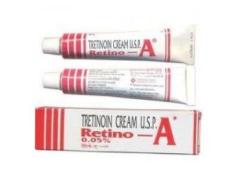Description
Acne, a common skin condition affecting millions worldwide, can be a source of frustration and self-consciousness. Countless products and treatments promise clearer skin, but one that has stood the test of time is Retin-A cream. Renowned for its effectiveness in treating acne, Retin-A, or tretinoin, has become a staple in dermatological care. In this article, we explore the wonders of Retin-A cream and its role in acne treatment.
Understanding Retin-A:
Retin-A, Cream a derivative of vitamin A, belongs to the class of medications known as retinoids. It is available in various formulations, with the cream being one of the most commonly prescribed for acne treatment. Retin-A works by promoting skin cell turnover, preventing the formation of comedones (clogged pores), and reducing inflammation – key factors in the development of acne.
Mechanism of Action:
Retin-A's primary action is to increase the rate at which skin cells are replaced, helping to shed old, damaged cells and promote the growth of new, healthier ones. This accelerated turnover helps to prevent the formation of microcomedones, the precursors to acne lesions. Additionally, Retin-A helps to unclog pores, making it easier for other acne medications to penetrate the skin and target the root causes of acne.
Application and Usage:
Retin-A cream is typically applied in a thin layer to clean, dry skin in the evening. It is important to follow the prescribed dosage and instructions provided by a dermatologist, as overuse can lead to irritation and dryness. Starting with a lower concentration and gradually increasing as tolerated is a common approach to minimize side effects.
Results and Timeline:
Results from Retin-A treatment are not instantaneous, and patience is key. Improvement in acne may be noticeable after several weeks, with optimal results seen after several months of consistent use. Reducing the frequency of breakouts, minimizing the appearance of acne scars, and achieving an overall smoother complexion are common benefits reported by users.
Possible Side Effects:
While Retin-A is generally well-tolerated, some users may experience side effects, especially during the initial weeks of treatment. Common side effects include redness, peeling, and dryness. These symptoms are often transient and can be managed with proper skincare and moisturization. It is crucial to use sun protection during Retin-A treatment, as the skin may become more sensitive to sunlight.
Precautions and Considerations:
Pregnant or breastfeeding individuals are advised to consult with their healthcare provider before using Retin-A, as excessive vitamin A intake can be harmful to the developing fetus. Additionally, those with a history of sensitivity to retinoids or other skin conditions should inform their dermatologist before starting Retin-A treatment.
Conclusion:
Retin-A cream has earned its reputation as a powerful and effective acne treatment, providing hope for those struggling with persistent breakouts. While it requires commitment and patience, the transformative effects on skin texture and clarity make it a valuable tool in the dermatologist's arsenal. As with any medication, consulting with a healthcare professional is essential to ensure proper use, monitor progress, and address any potential concerns. With the right guidance, Retin-A can be a game-changer in the journey towards clearer, healthier skin.














